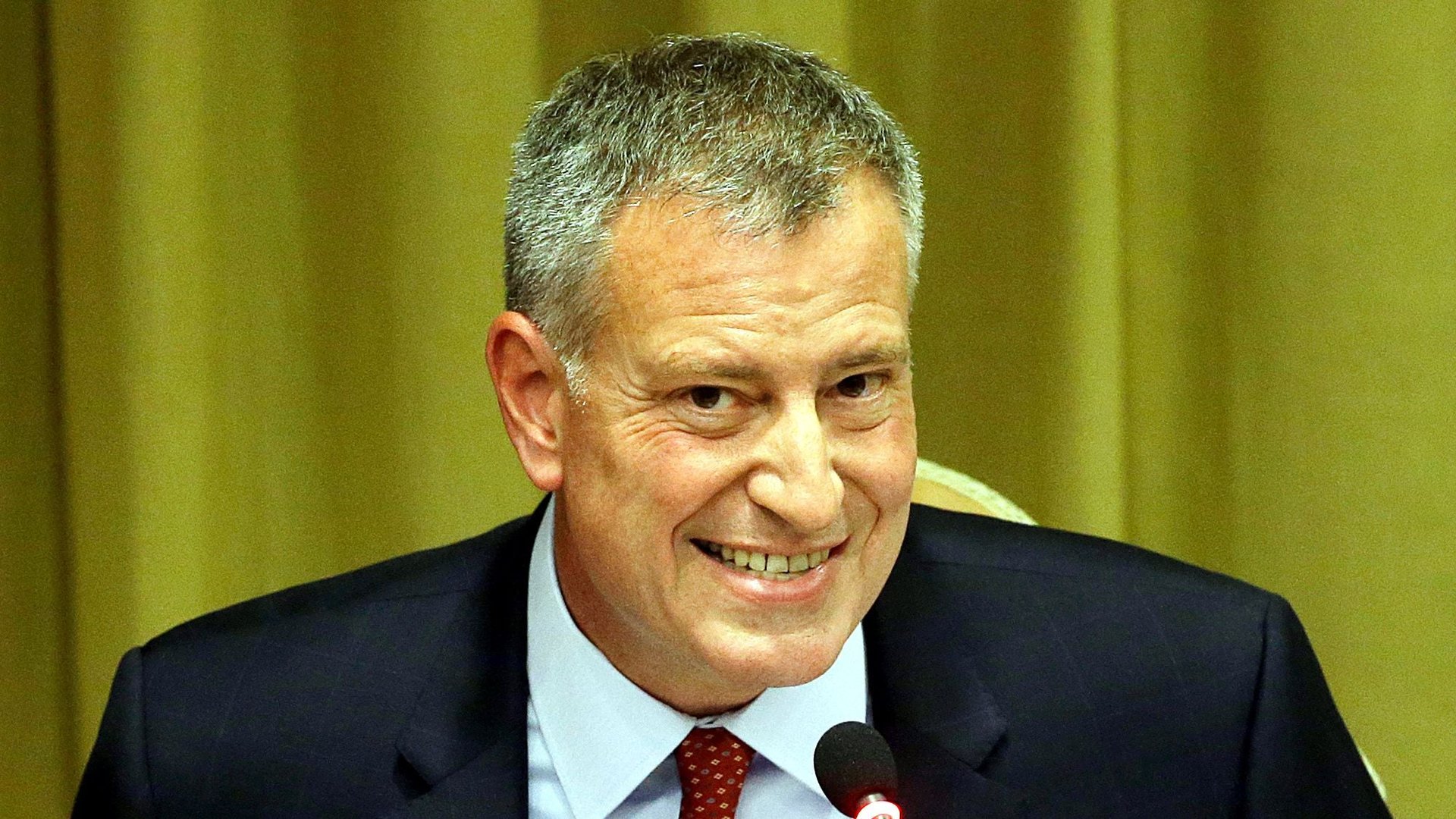Uber should savor its New York win—because it may be paying for the subway before long
Bill De Blasio and Uber have struck a deal, with the New York City mayor backing down from threats to cap the company’s growth. But Uber’s victory in the largest city in the US may only be a temporary respite.


Bill De Blasio and Uber have struck a deal, with the New York City mayor backing down from threats to cap the company’s growth. But Uber’s victory in the largest city in the US may only be a temporary respite.
Both sides spun the agreement as a chance to work together, with Uber sharing more data about its operations so that the city and the company can find solutions to grievances attributed to the new business model: Increased traffic congestion, complaints about treatment of drivers, and access for disabled passengers.
But here’s the catch: De Blasio is intent on forcing Uber to contribute funds to the Metropolitan Transportation Authority, the regional public transit agency. The city’s street-hail yellow taxis each pay $0.50 per ride to fund subways and trains, and $0.30 to fund wheel-chair accessible taxis.
Uber currently pays neither, but it’s clear city officials want them to start chipping in; a company spokesperson declined to comment. Uber has previously estimated that its busiest New York City drivers earn $29.60 an hour, which means the company’s reported 20% take per ride is about $7.40; adding MTA contributions could cut revenues in the US’s largest taxi market by more than 7%.
Forcing Uber to pay may not be easy: Such a deal would require approval from the state government, which operates the MTA. And relations between De Blasio and New York governor Andrew Cuomo are rougher than heavy-grit sandpaper; just yesterday, Cuomo criticized De Blasio’s cap plan and praised Uber. But there’s a $15 billion deficit in MTA funding over the next five years that both governments need to address.
The deal was announced just a day before the city council would have voted to limit the number of new for-hire cars in the city, a move which would have largely affected Uber, which holds the biggest share of that market. While the cap’s supporters argued that the cap was not about Uber but about all car-service companies, including competitors like Lyft and Gett, it’s not a surprise that Uber was the only company that met with government officials to resolve the dispute.
The mayor backed down after several weeks of vociferous political campaigning, spearheaded by Uber political majordomo David Plouffe, that portrayed the mayor as a tool of the city’s taxi firms. But it’s not clear if public opinion had much to do with the change of heart.
Last month, city officials admitted that the cap was ostensibly intended to facilitate was already under way. A mayoral aide said the city offered Uber this same deal last week, but that the company refused to accept it because it only delays and does not eliminate the possibility of capping the company’s growth in the future. In the end, the aide said, Uber approached the Mayor’s office and took the deal before the vote.
Traffic models designed by public transit advocates make a compelling case that the huge influx of new for-hire vehicles on digital platforms has played a significant role in slowing down traffic in the city’s central business district, though it is not the only factor. The models also suggest that capping for-hire car growth won’t solve the problem, and that a pricing scheme that reflects the true cost of traffic—and funnels money into transit—is the most effective way to make the city more efficient.
The city’s study of Uber’s effect on traffic is expected to be completed in about four months. The framework for new regulations does not have a timeline, but we can expect that the city will be coming back to Uber, if not to cap its growth, then to demand it contribute more to the public coffers.